Move
POSTURE DEEP DIVE: FLAT-BACK CORE
Flat-Back Core is a serious multitasker, working all angles of your abs, including the rectus and internal and external obliques. To make sure you’re making the most of your time on the mat, barre3 Lead Instructor Catie Fahrner explains how to properly execute and modify the pose to make it your own.
THE BENEFITS OF FLAT BACK CORE
A staple B3 posture that targets the abs, this front-body-focused core work ignites the rectus and internal and external obliques to help stabilize your trunk. You’ll also work your mid-back muscles and lats, and if you connect your breath with this posture, you can work the deep transverse abdominals, too.
Since the transverse abdominals work in conjunction with the diaphragm to create respiration, a strong deep core is an important part of total-body health. When our abs are strong, our low back is protected and our spine is supported and able to be long and strong in everything we do. Plus, targeting the abs is a great way to aid your digestive system as gentle movement massages the internal organs.
HOW TO SET IT UP
Lie on your back and bend your knees so your feet are flat on the floor. Anchor your hips and ribs down and hug your abs in. Press your back into the mat, relax your shoulders, and leave a little tunnel of air under your neck. Lift one knee up so the shin is in tabletop. Find your balance, then lift the other knee and hold. From there you can layer in movement such as alternately reaching one leg long, pulling in, and repeating with the other leg.
COMMON DO’S AND DON’TS
Paying attention to the nitty gritty of positioning while you’re in Flat Back Core can make a big difference. Here are some do’s and don’ts to keep in mind.
DO knit your ribs.
Place a palm right where you zip up your jeans and feel if your abs are pulling slightly away. If not, and the abs are pressing outward or puffing up, take a quick break and reset, or raise the legs the higher.
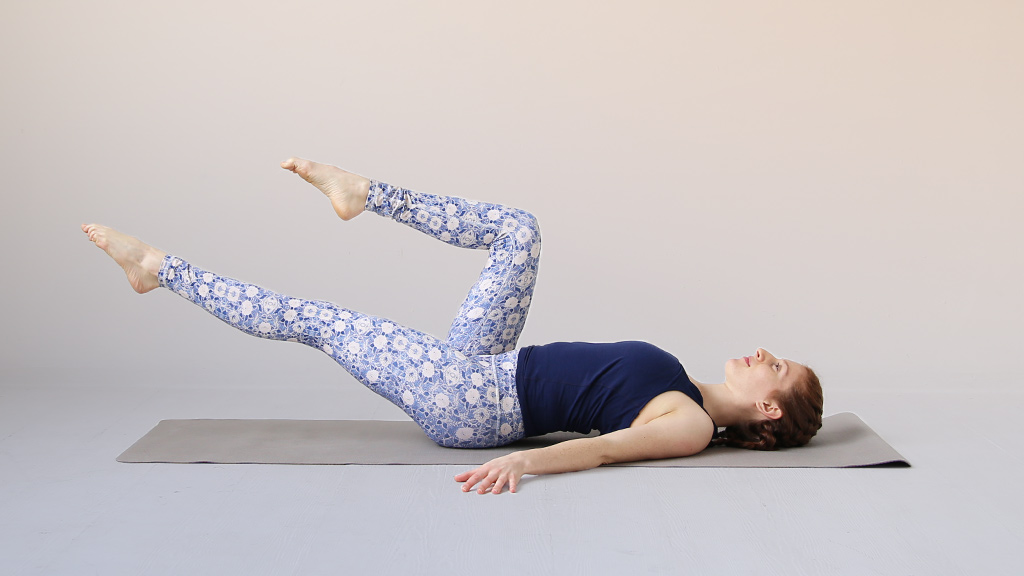
DON’T pop your ribs / Push tailbone into the mat.
Splaying or popping the ribs means you’ve lost connection with your abs. Forcing your tailbone into the mat can create discomfort in your low-back.
DO extend legs out to a 45-degree angle.
This will allow you to maintain the integrity of your alignment with heavy hips, abs hugged in, ribs down, and soft shoulders.
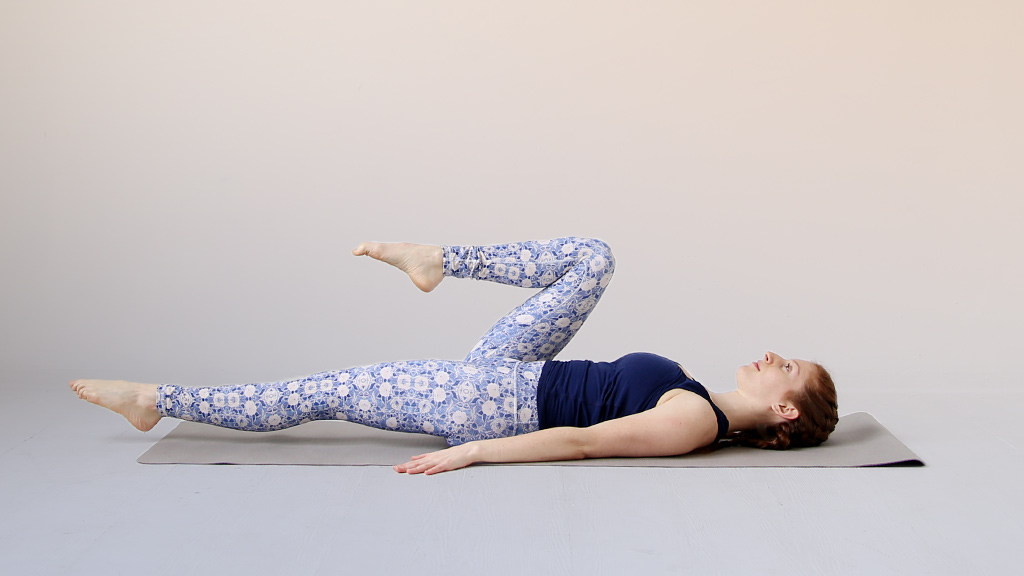
DON’T make your feet go too low.
You can go an inch lower than 45 degrees to make the move more challenging, but any lower and you will likely get into your low-back.
DO let your shoulders be soft.
Breathe and release any tension in the shoulders to find ease with the effort.
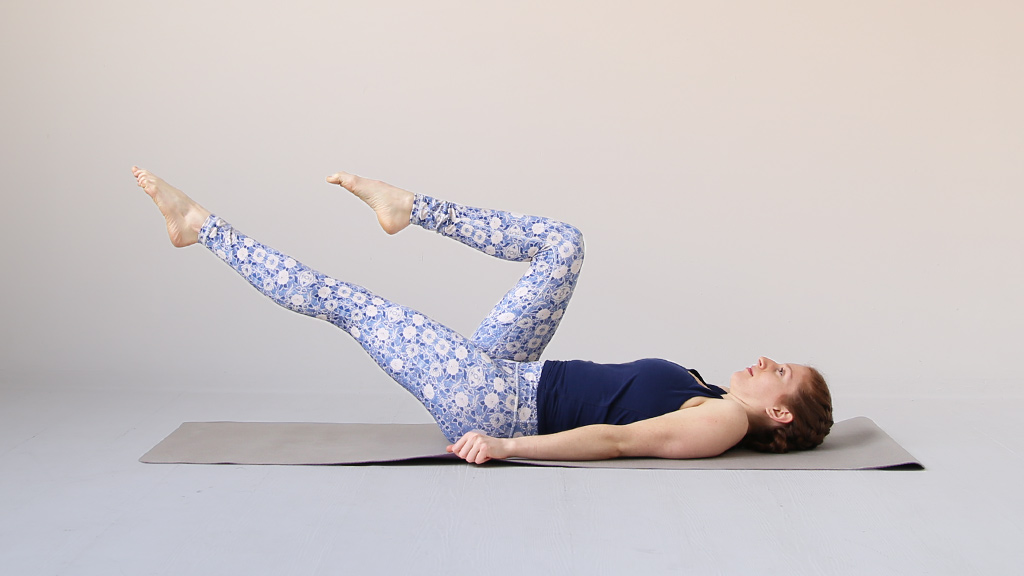
DON’T let your shoulders scrunch up.
If the shoulders are tense, you won’t get the most out of the posture, so try to breathe and release any shoulder tension.
ADAPT THIS MOVE
If you’ve recently had a baby, if you have abdominal separation, if the move feels too challenging today, or it causes stress on your hip flexors or low-back—or you just don’t feel like being on your back—try these adaptations.
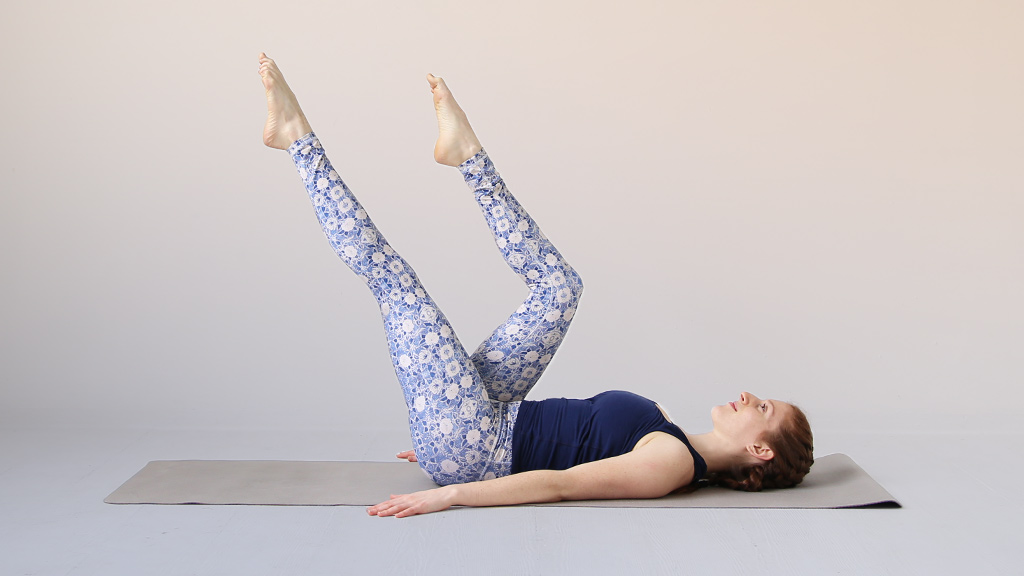
Raise your feet higher.
If you have any low-back discomfort, you can work with your legs higher as if you’re walking on the ceiling. And slow down your movement to make it easier to hug the abs in.
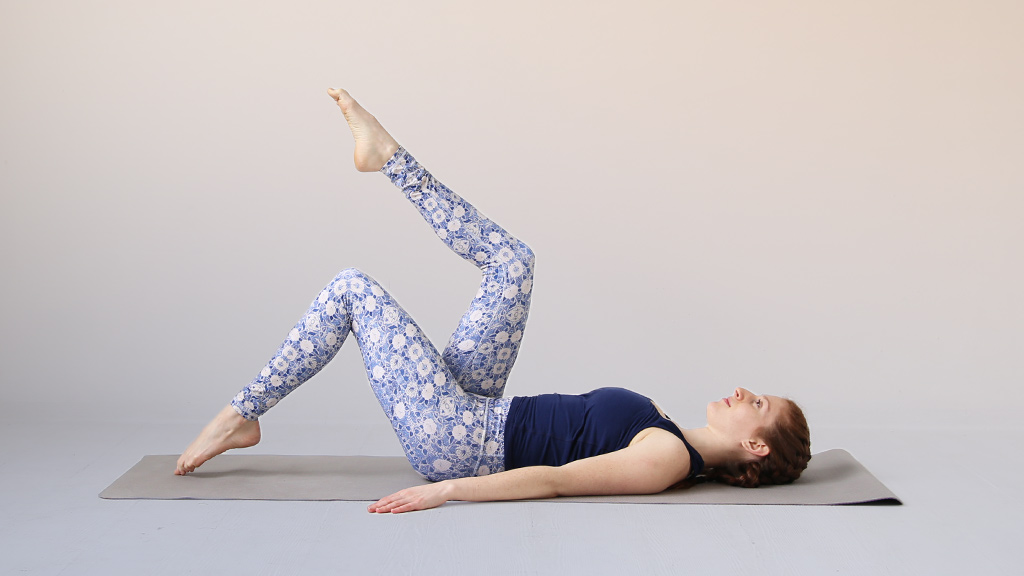
Try reverse marches.
If lifting the legs high isn’t comfortable, you can work lower and alternately tap toes toward your mat for Reverse Marches.
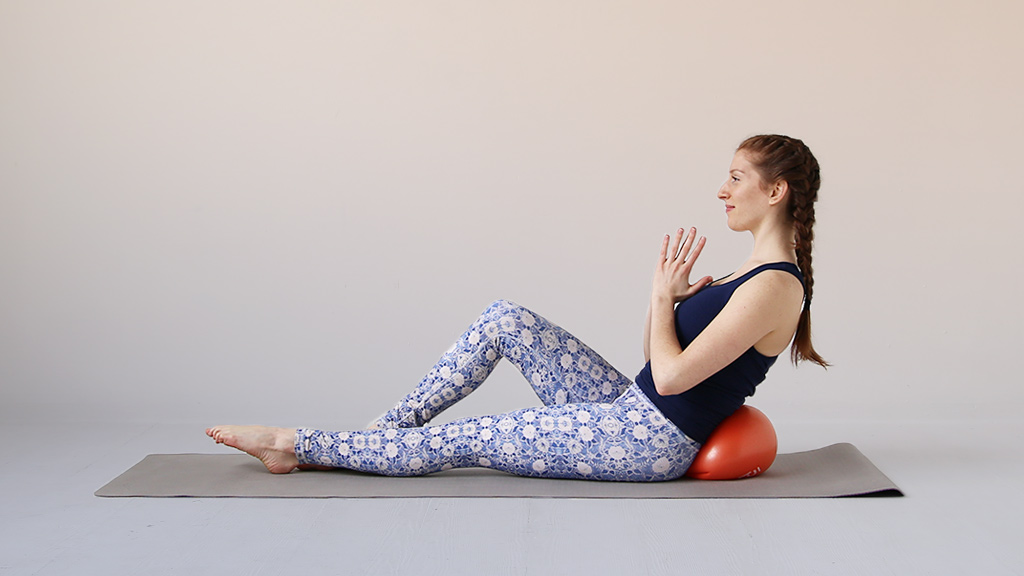
Do upright core instead.
If being on your back is uncomfortable, sitting upright against a core ball a great option.
Anchor the hips and wedge the ball behind the low-back to help you stay nice and tall in your spine.
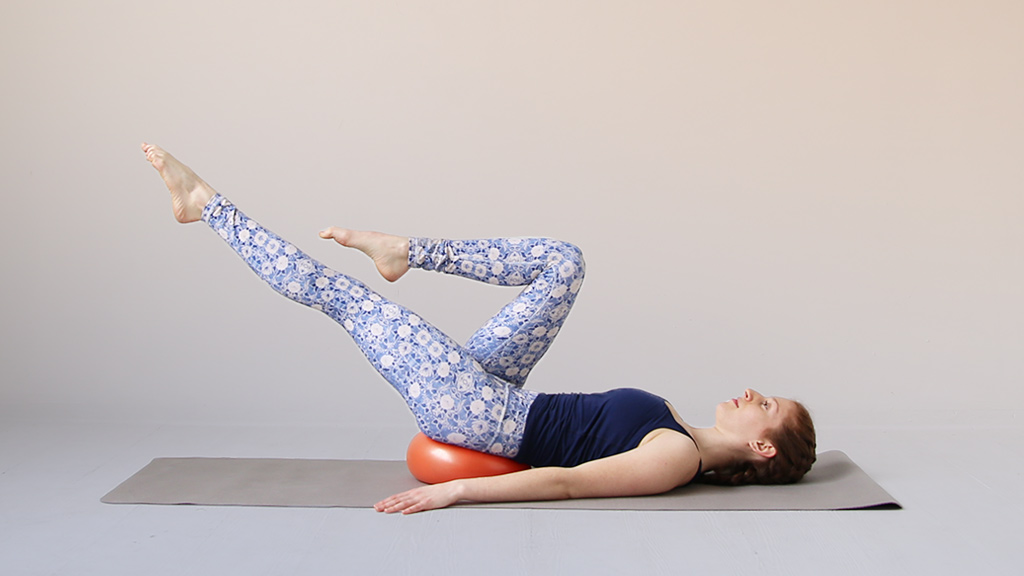
Switch to incline core.
If you can’t find a comfortable spot for your hips or low-back, or if you connect deeper in Incline Core, then grab your core ball and place it below your hips before doing the movement.
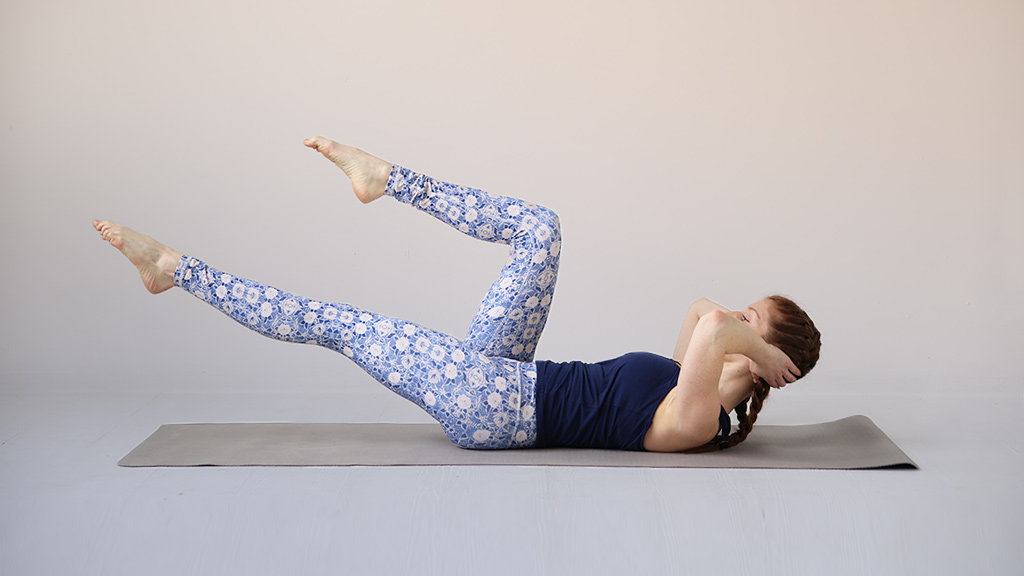
TAKE IT TURBO
Lift your head, neck, and shoulders while doing the move to target your upper rectus.
Keep the upper body on the mat, but hug an imaginary beach ball with your arms for an extra balance challenge.
Lift arms, bend elbows up toward the ceiling, and press your palms into the floor by your head (or back into the baseboard if you’re near a wall). This action will narrow the rectus and may help you get deeper into the abdominal wall.
Breathe to go deeper. Exhale at your exertion point, and then inhale back to your starting point.
Flat-Back Core is a serious multitasker, working all angles of your abs, including the rectus and internal and external obliques. To make sure you’re making the most of your time on the mat, barre3 Lead Instructor Catie Fahrner explains how to properly execute and modify the pose to make it your own.
THE BENEFITS OF FLAT BACK CORE
A staple B3 posture that targets the abs, this front-body-focused core work ignites the rectus and internal and external obliques to help stabilize your trunk. You’ll also work your mid-back muscles and lats, and if you connect your breath with this posture, you can work the deep transverse abdominals, too.
Since the transverse abdominals work in conjunction with the diaphragm to create respiration, a strong deep core is an important part of total-body health. When our abs are strong, our low back is protected and our spine is supported and able to be long and strong in everything we do. Plus, targeting the abs is a great way to aid your digestive system as gentle movement massages the internal organs.
HOW TO SET IT UP
Lie on your back and bend your knees so your feet are flat on the floor. Anchor your hips and ribs down and hug your abs in. Press your back into the mat, relax your shoulders, and leave a little tunnel of air under your neck. Lift one knee up so the shin is in tabletop. Find your balance, then lift the other knee and hold. From there you can layer in movement such as alternately reaching one leg long, pulling in, and repeating with the other leg.
COMMON DO’S AND DON’TS
Paying attention to the nitty gritty of positioning while you’re in Flat Back Core can make a big difference. Here are some do’s and don’ts to keep in mind.
DO knit your ribs.
Place a palm right where you zip up your jeans and feel if your abs are pulling slightly away. If not, and the abs are pressing outward or puffing up, take a quick break and reset, or raise the legs the higher.

DON’T pop your ribs / Push tailbone into the mat.
Splaying or popping the ribs means you’ve lost connection with your abs. Forcing your tailbone into the mat can create discomfort in your low-back.
DO extend legs out to a 45-degree angle.
This will allow you to maintain the integrity of your alignment with heavy hips, abs hugged in, ribs down, and soft shoulders.

DON’T make your feet go too low.
You can go an inch lower than 45 degrees to make the move more challenging, but any lower and you will likely get into your low-back.
DO let your shoulders be soft.
Breathe and release any tension in the shoulders to find ease with the effort.

DON’T let your shoulders scrunch up.
If the shoulders are tense, you won’t get the most out of the posture, so try to breathe and release any shoulder tension.
ADAPT THIS MOVE
If you’ve recently had a baby, if you have abdominal separation, if the move feels too challenging today, or it causes stress on your hip flexors or low-back—or you just don’t feel like being on your back—try these adaptations.

Raise your feet higher.
If you have any low-back discomfort, you can work with your legs higher as if you’re walking on the ceiling. And slow down your movement to make it easier to hug the abs in.

Try reverse marches.
If lifting the legs high isn’t comfortable, you can work lower and alternately tap toes toward your mat for Reverse Marches.

Do upright core instead.
If being on your back is uncomfortable, sitting upright against a core ball a great option.
Anchor the hips and wedge the ball behind the low-back to help you stay nice and tall in your spine.

Switch to incline core.
If you can’t find a comfortable spot for your hips or low-back, or if you connect deeper in Incline Core, then grab your core ball and place it below your hips before doing the movement.

TAKE IT TURBO
Lift your head, neck, and shoulders while doing the move to target your upper rectus.
Keep the upper body on the mat, but hug an imaginary beach ball with your arms for an extra balance challenge.
Lift arms, bend elbows up toward the ceiling, and press your palms into the floor by your head (or back into the baseboard if you’re near a wall). This action will narrow the rectus and may help you get deeper into the abdominal wall.
Breathe to go deeper. Exhale at your exertion point, and then inhale back to your starting point.










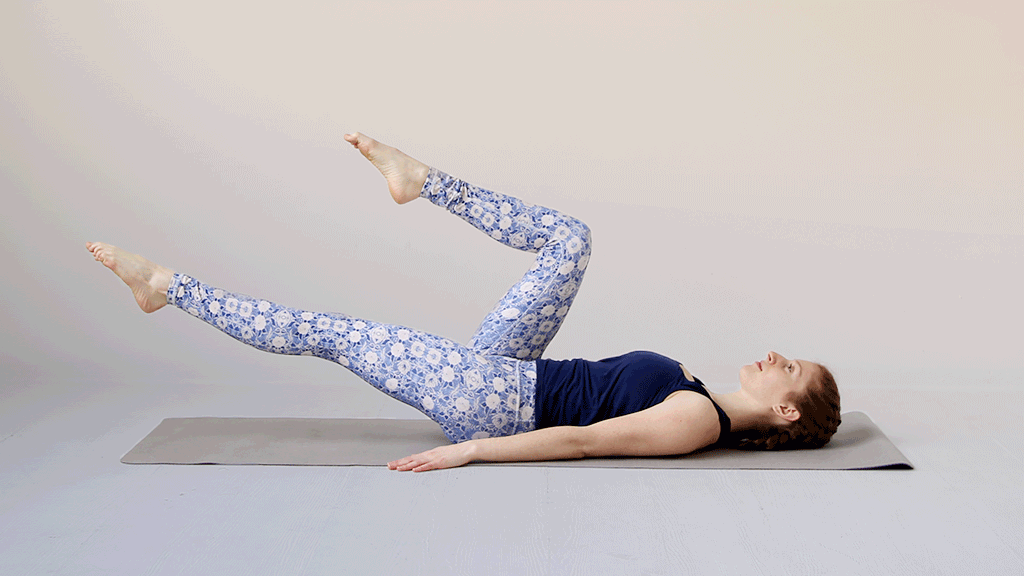







2 people have left a comment. Join the conversation!
View Comments